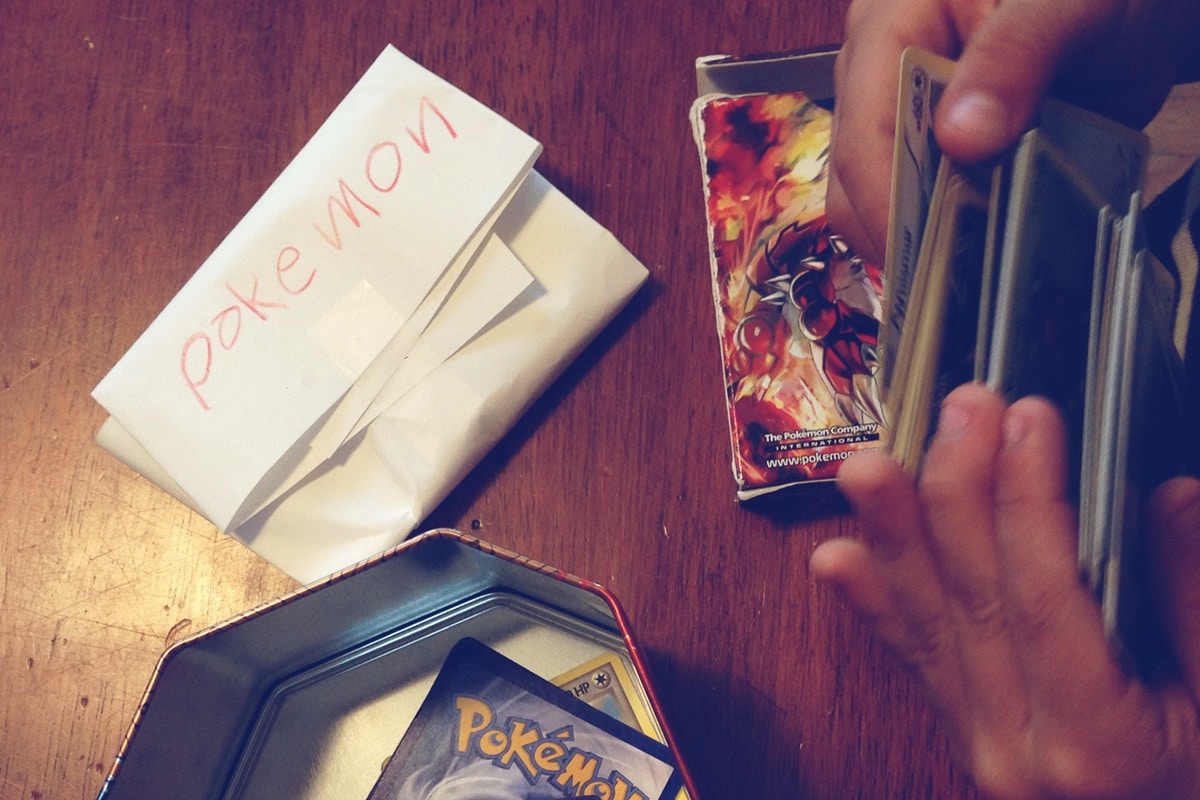Pokémon preoccupies my seven-year-old. Specifically, I'm talking about the old-school trading cards (based on the older-school video game series). He's obsessed. And he's not the only one. Last night, my younger guy's T-ball game stalled when the opposing team's next three batters-up stood huddled over a Pokémon pile. This prompted another mom to reveal that a neighbor boy had stopped by their house that morning before school to present her first grader with his first set of cards. Pokémon passion is downright contagious.
As parents, we get the excitement of the trading trend. But most of us can't seem to figure out what Pokémon itself is all about. Looking for answers, I keep asking questions. I'm making slow progress but, to-date, here's what I can tell you: It's not pronounced Pokey Man. Or Poke-EE-mon. It is Poke-uh-mon. Say it. Do you feel sorta Jamaican? Good. You've got it. Keep it up so you don't embarrass your kid. There's a real game associated with these cards. According to my son, the Pokémon Trading Game, as it's officially called, is all about these weird animals that battle against each other and, if one of them wins, the trainer that owns them gets that Pokémon. Wikipedia mostly confirms this. But kids don't actually play the game. At least in first grade. They just trade the cards to "get the strongest Pokémon." And they talk about the game a lot. With each other.
Pokémon encourages math practice. What's 140 plus 20? You tell me. What's 10 plus 20? I think you know. 30? Yes. For weeks, my kid's been calling out equations he creates from numbers on the cards. When I push the questions back to him, he works out the answers. I call this math practice. For real. On the homework chart he turns in weekly to his teacher. The math-practice numbers are "damages." From what I can gather, these numbers reflect how much attack damage one Pokémon can do to another. They are always in units of ten. Sometimes there are two numbers on a card, which is good only for math practice. According to J, "You can only use one attack. There are usually two attacks. You want to use the higher attack." Note: This information has not been verified. Please crowdsource fact-check it for me.
EX cards are really good. I don't know why. Do you? Help a mother out. Clandestine card-trading favors cargo pants. "I'm going to need to wear pants with big pockets tomorrow," J told me last evening, sorting through his stash. "So you can sneak your Pokémon cards out to recess and trade?" I asked. "We're allowed to do that," he responded, with a flushed, smirky face that suggested this was not true, and then: "Wait! How did you know?" Because I'm on to this Pokémon game, kid. Sorta not at all.

